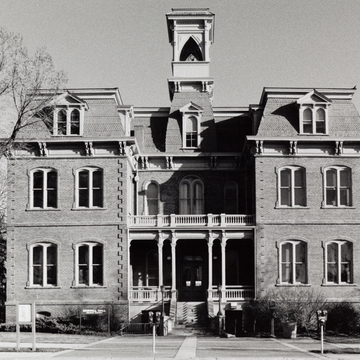This four-story brick structure in the Second Empire style stands at the head of the university's historic quad. Its front entrance, however, faces south, away from the quad, reflecting the original orientation of the campus. The mansard roof has numerous pedimented dormers and is capped by a cupola with pointed arches and a cornice with dentils. A bracketed cornice lines the roof eaves, and brick quoins finish the corners. The interior incorporates accents in dark wood and wainscot in grained bird's-eye maple.
Morrill Hall was the university's only building during its first few years in Reno, providing space for classes, administration, and dormitories. By the mid-twentieth century it fell into disuse and disrepair. Using state grants, the university restored the hall, which now contains general meeting space and offices for the alumni association and the University of Nevada Press.




